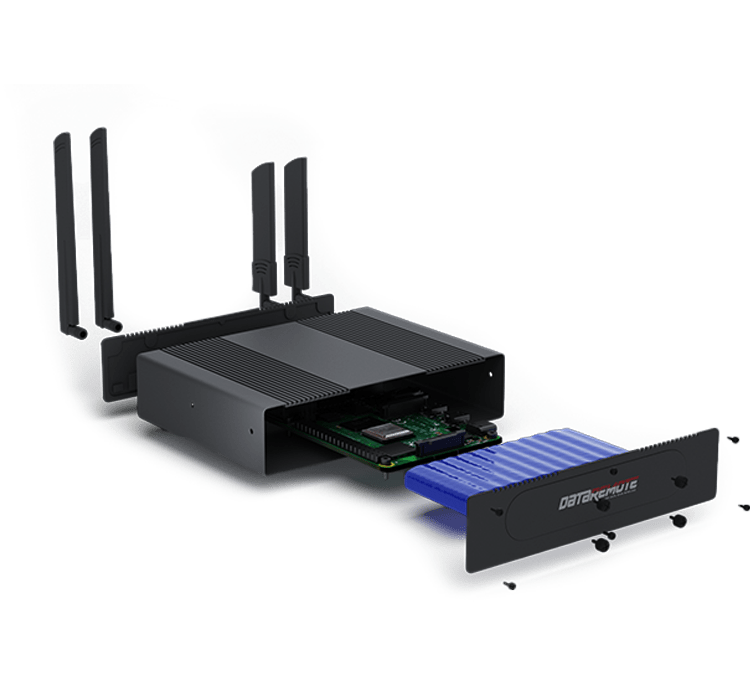MIAMI, FL / THE FAST MODE / FEB 6, 2025 / The Looming Copper Sunset: Globally Navigating the Telecom Industry’s Great Transition
Looking across the ever-evolving landscape of connectivity, one thing becomes crystal clear: the sun is setting on the copper age. For decades, copper has been the backbone of our communication networks. However, its reign is ending, driven by technological advancement and the demand for faster, more reliable connectivity. Let’s explore the global copper retirement status and its implications for the telecom industry and its impact on government and private businesses, focusing on the challenges and opportunities this transition presents.
A clear long-term trajectory emerges: A future where fiber optics and wireless technologies dominate business communication, relegating copper to a niche role.
Why is copper on the chopping block?
Progress demands change. The limitations of copper are becoming increasingly clear in a world demanding high-bandwidth applications like streaming video, cloud computing, and the Internet of Things. Copper’s limited bandwidth and susceptibility to interference cannot keep up. Furthermore, supporting aging copper networks is increasingly expensive, a burden telecom companies are eager to shed. Recently, AT&T shared intentions to end service to copper lines in all states by 2029 except for California where the company has seen major pushback with state regulators. This cost factor is a major driver of the transition. Maintaining copper networks requires significant investment in outdated technology, while fiber offers long-term cost savings due to its lower maintenance requirements and higher capacity.
Moreover, the rise of fiber optics and 5G is accelerating copper’s demise. Fiber, used for fixed locations, offers significantly higher bandwidth and lower latency, ideal for next-generation services. 5G further reinforces the need for a modern, fiber-based infrastructure to keep up with the rapid expansion of wireless advancements, making copper retirement a strategic imperative. The synergy between fiber and 5G is crucial. 5G’s high-speed capabilities rely on a robust backhaul network, and fiber provides the necessary bandwidth and stability to support the increasing demands of 5G traffic. This interdependence further solidifies the need for widespread fiber deployment.
Where is copper retirement happening globally?
Globally, leading the charge are countries like Japan, South Korea, and Singapore, with highly advanced fiber optic networks and significant copper decommissioning already completed. These nations recognized the limitations of copper early on and invested heavily in fiber infrastructure, reaping the benefits of faster internet speeds and enhanced technological capabilities. Their success serves as a model for other countries embarking on the copper retirement journey.
Across Europe, the picture is mixed. Countries like the UK, Germany, Sweden, and the Netherlands are actively pursuing copper retirement strategies, with specific targets and timelines in place over the next 3-8 years. In the UK alone, there are over 14 million lines impacted, and 2 million specialty devices such as fire alarms, elevators, utilities monitoring, and more, that currently use the copper network. In the UK there has been resistance presented by town councils; however, the trend is inevitable as the world turns to cost-efficient IP-based telephony. Poland has announced that all copper lines will be retired by 2025, and Sweden expects 98% of lines retired with similar timing. The Nordic countries are also generally ahead of the curve in terms of fiber deployment. The European experience highlights the challenges of transitioning from legacy infrastructure. Integrating new technologies with existing systems, addressing regulatory hurdles, and managing public perception are key considerations for a successful transition.
In North America, the United States is seeing significant copper decommissioning, particularly by major telecom operators, though the vastness of the country presents logistical challenges. According to the most recent Federal Communications Commission (FCC) report, there are an estimated 30—50 million addressable landlines currently in the US, presenting a serious challenge to meet AT&T’s 2029 deadline. Canada is also transitioning, albeit at a slower pace. The North American market faces unique challenges due to its geographical size and diverse regulatory landscape. Coordination between telecom providers, government agencies, and local communities is essential to ensure a smooth and equitable transition.
Developing regions in Africa, Latin America, and parts of Asia are generally lagging, primarily due to economic constraints and lower broadband penetration. However, even in these regions, there are pockets of fiber deployment, particularly in urban centers. Bridging the digital divide in these regions requires innovative solutions and investment in infrastructure. Leveraging public-private partnerships and exploring alternative technologies can help accelerate the adoption of fiber and improve connectivity in underserved areas.
This global shift is not uniform, and the pace of change varies significantly depending on local regulations, economic conditions, and consumer demand. However, the overall direction is clear: copper is being phased out.
How can businesses navigate this transition successfully?
A strategic, phased approach is necessary, but any further delay could be costly in both the short and long terms. Businesses should assess their current communication needs and infrastructure, because choosing the right POTS (Plain Old Telephone Service) transformation solution depends on the specific needs and breadth of each business. Consulting with a telecom expert can help identify the best approach. There are a number of IP-based solutions that can address all your communications challenges seamlessly and minimize deployment disruptions. Businesses must proactively plan for the copper retirement. This includes evaluating current communication systems, exploring available alternatives, and developing a migration strategy that minimizes disruption and maximizes the benefits of new technologies. Understanding the implications for security systems, point-of-sale systems, and other critical business functions is crucial.
The retirement of copper networks is a global trend driven by the decay of archaic infrastructure built over a century ago and the demand for higher bandwidth. While the pace of transition varies across regions, the overall direction is clear. This shift presents both challenges and opportunities for the telecom industry, governments, and businesses as they navigate the complexities of migrating to a future dominated by fiber and wireless technologies. Embracing this change is not just about upgrading technology; it’s about transforming business operations and unlocking new possibilities.
By embracing the transition, businesses can gain a competitive edge. The copper sunset is a new beginning for the business world.
— Timor Brik, Chief Operating Officer of DataRemote and licensed attorney with 10+ years of experience modernizing the telecommunications industry
Learn More About DataRemote’s Solutions
POTS Line Replacement
Convert your analog POTS lines to IP with support for FAX, fire panel, burglar alarm, analog modem data, ring-down, voice & emergency lines, with full access to E-911.
Fixed Wireless Access
Experience lightning-fast internet speeds with our cutting-edge FWA technology, ensuring consistent and stable connectivity regardless of location.

Internet Backup & Cellular Failover
Never experience downtime again with DataRemote’s instant cellular failover and robust 24 to 48-hour battery backup solutions, ensuring continuous operation for your critical services.
Info
18001 Old Cutler Rd. Ste. 600,
Miami, FL, 33157



